12 discontinued snacks and beverages that you can never buy again, from Tab to Snackwell's
Food companies regularly discontinue items that don't sell well. Many culled products during the pandemic to focus on top-selling products.
Examples of discontinued snacks from the past few decades include Odwalla juice, New Coke, and purple ketchup.
Here are 12 products from consumer packaged food companies seemingly now gone forever.
Tab
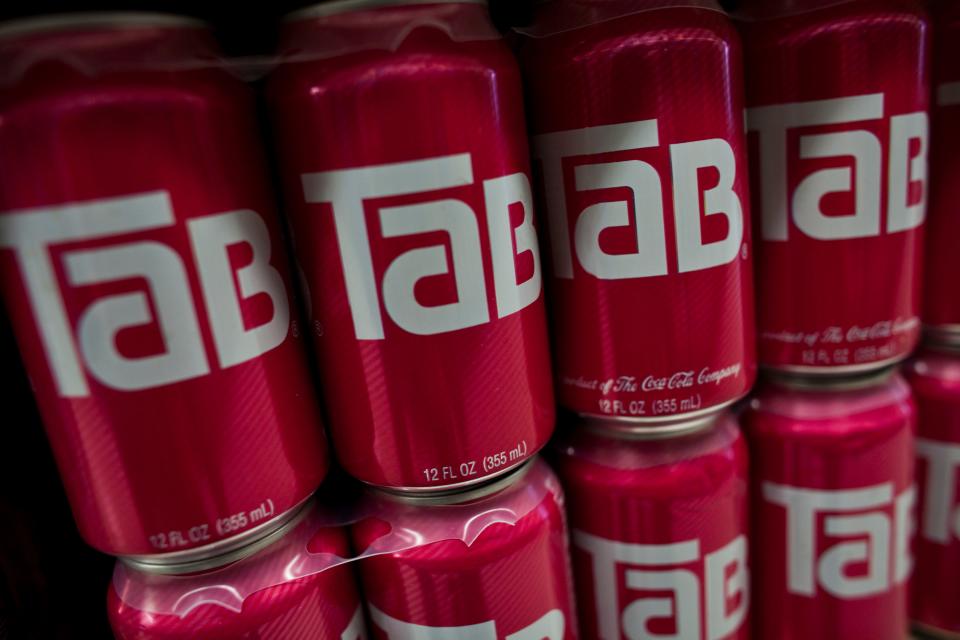
Tab became one of the first diet sodas to hit the market in 1963. That gave it a niche audience that few other soft drinks could match until Diet Coke and Diet Pepsi came along in the early 1980s, Fast Company reported in 2020.
Sales of Tab declined after that, but Coca-Cola, which owned the brand, kept making it for decades in order to satisfy its small but loyal fan base, the Wall Street Journal reported. Finally, in 2020, Coke said it would discontinue the soda at the end of that year as part of a broader culling of underperforming brands.
But even until its demise, Tab had its fans. One woman Insider interviewed in 2020 even ran a website to help Tab drinkers find the soda for sale as its distribution dwindled.
Heinz Ez Squirt purple and green ketchup
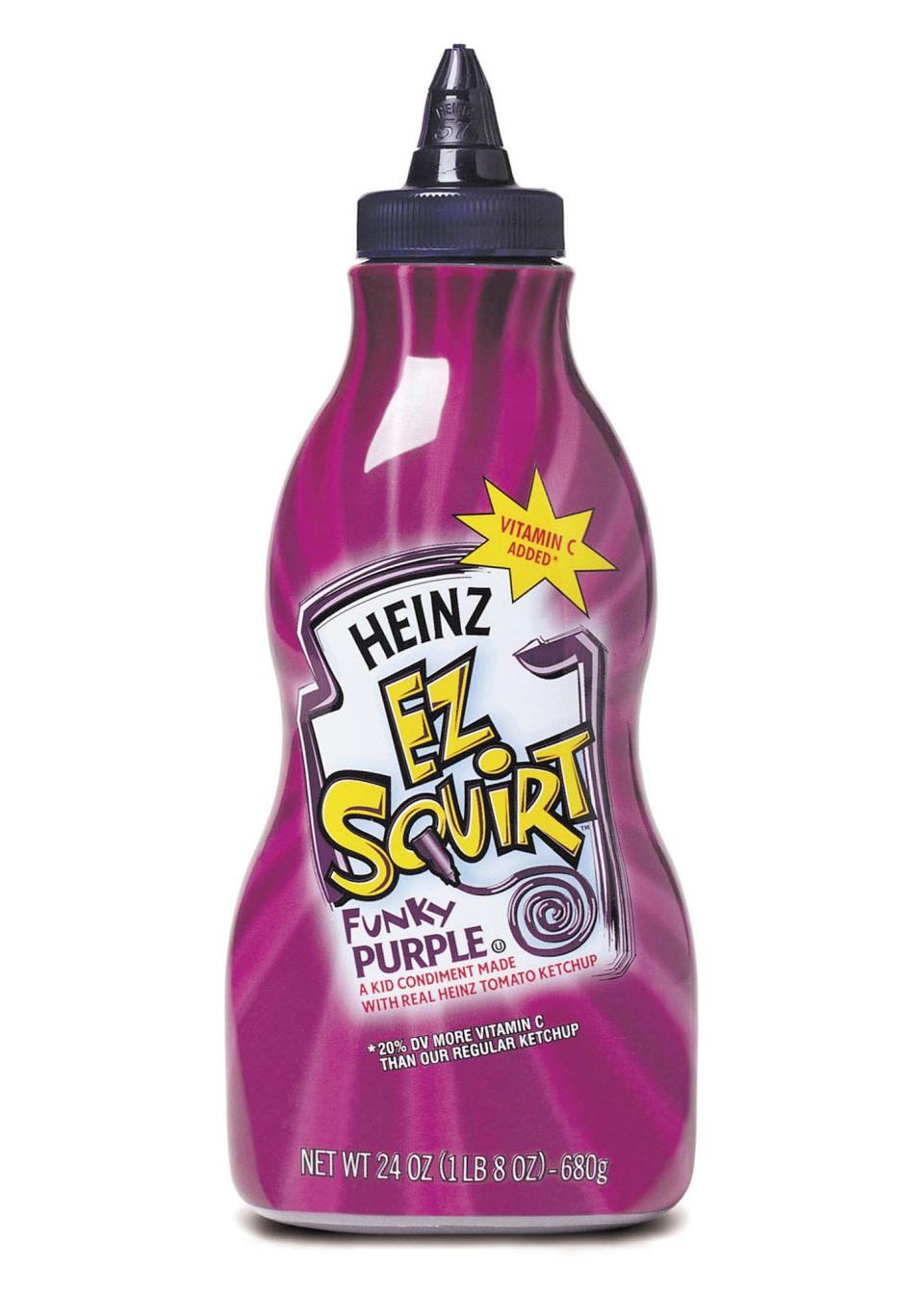
Heinz started selling green ketchup as a tie-in with the first Shrek movie in 2000, Fast Company reported. But afterwards, it introduced new colors, including purple and orange, which helped increase its share of US ketchup sales to 60%, according to the publication.
Called "EZ Squirt," the bottles also featured a nozzle that made it easier for kids to squirt the ketchup on their food. In a pop culture reference of the era, an ABC article at the time pointed out that kids could "draw Harry Potter lightening bolts on hot dogs" with the purple ketchup.
The last of the oddly colored condiments were pulled from grocery shelves in 2006. The early 2000s brought several oddly-colored foods that are now discontinued snacks, such as blue fries and pink margarine, but the fad fadded after a few years, Mashed reported.
Honest Tea
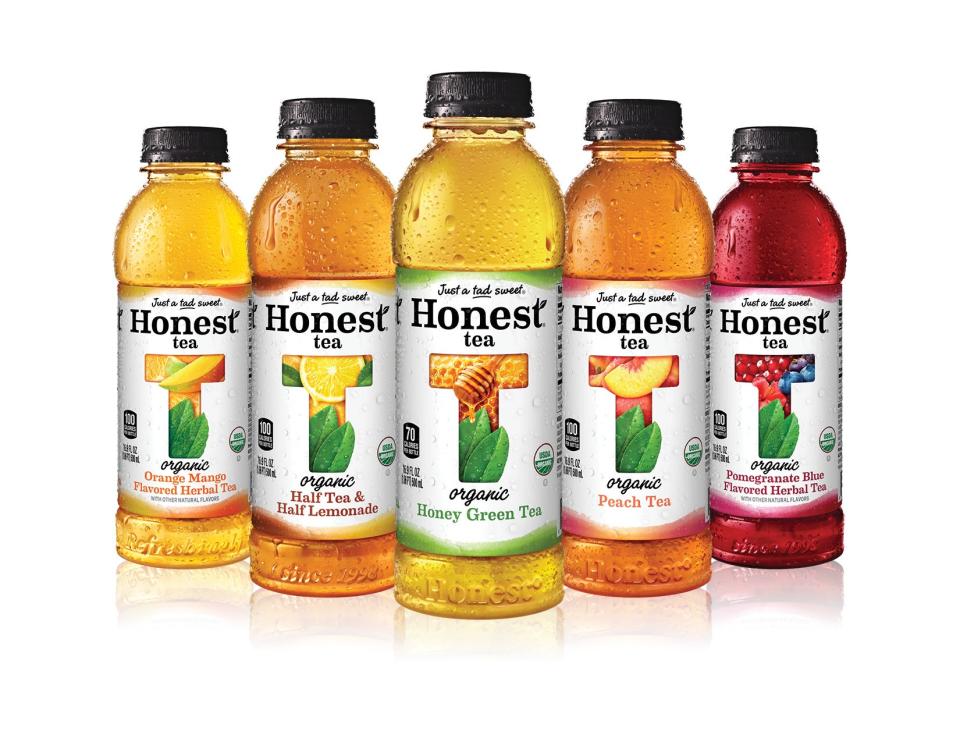
Seth Goldman and Barry Nalebuff started Honest Tea in 1998 as an alternative to sugary beverages. They eventually sold the brand to Coca-Cola in 2011, becoming one of the most notable examples of a small brand that attracted the attention of one of the biggest beverage companies in the world. At the time, Coke had a division just for acquiring and nurturing small brands.
Then, in 2022, Coke said it would eliminate Honest Tea. It was a decision that Goldman, who was no longer associated with the brand, called a "gut punch."
But the brand's originators have brought it back, in a way. Strictly speaking, you can't buy Honest Tea anymore. But Goldman, Nalebuff, and chef Spike Mendelsohn have started another line of bottled teas through Eat the Change, the company that Goldman and Mendelsohn run. The beverages, called Just Ice Tea, have since made it to retail shelves.
Odwalla juice
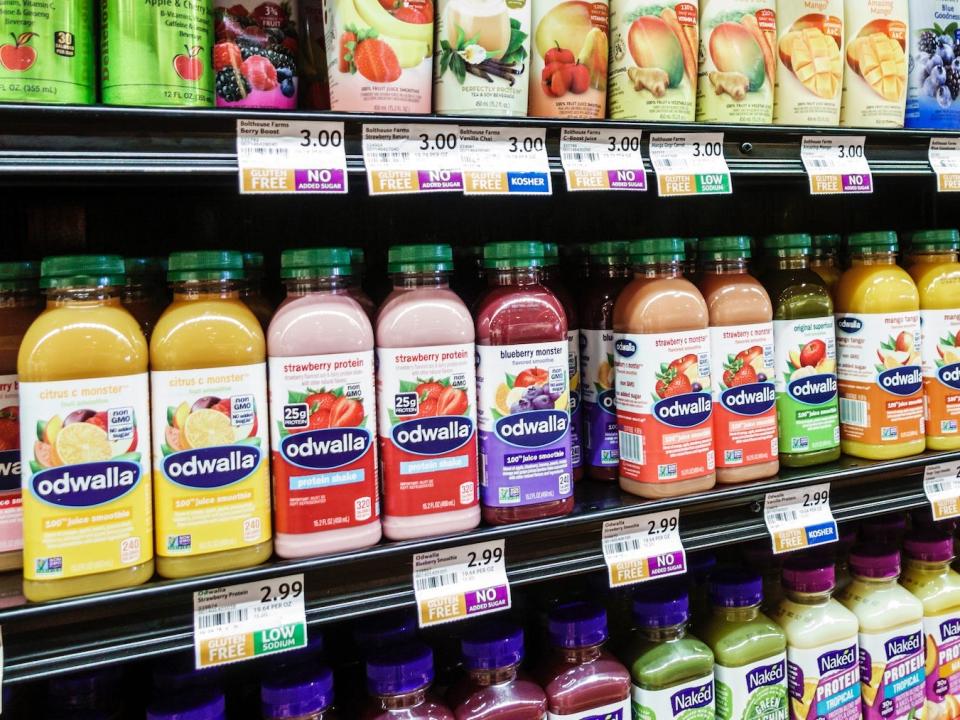
Another casualty of Coca-Cola's pandemic-era brand cutting was Odwalla, the juice and smoothie brand that Coke acquired in 2001 for $181 million. Coke pulled the plug on Odwalla just a few months it did the same to Tab in 2020.
The brand got its start in 1980 in California, where Greg Steltenpohl, Gerry Percy, and Bonnie Bassett sold fresh-squeezed orange juice to restaurants. The brand's bird mascot became a common sight in grocery stores and cafes in the late 1990s and early 2000s.
Private equity firm Full Sail IP Partners acquired the brand in 2021, but so far there are no signs of an Odwalla comeback.
Oreo Magic Dunkers
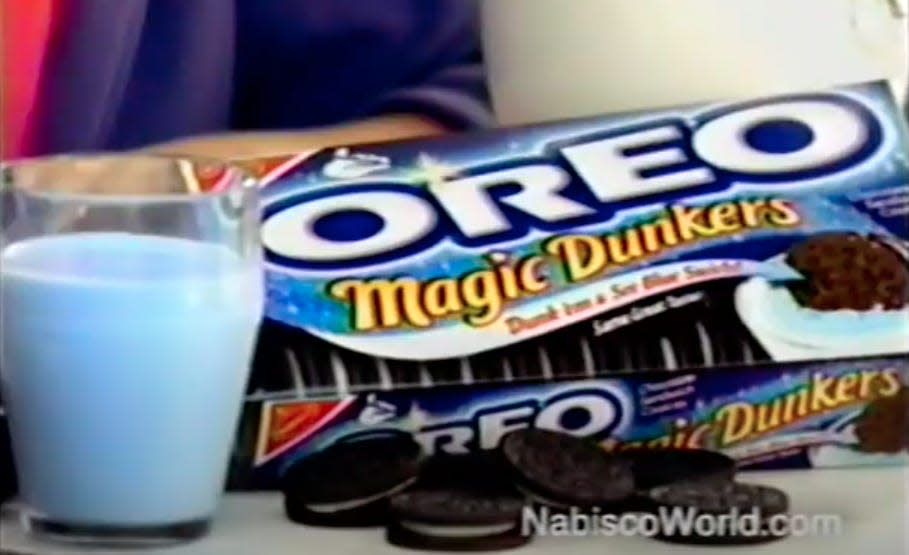
Twenty years ago, unusual colors in food weren't limited to just ketchup. In 2000, Nabisco, the maker of Oreos at the time, released a version of the sandwich cookie that changed the color of an accompanying glass of milk to blue.
The blue dye created blue swirls in a glass of milk — and could stain your hands, as two children in a television ad promoting the cookies learned.
Magic Dunkers were one of several short-lived Oreo varieties that became discontinued snacks. Other examples over the years include cookies with both chocolate and peanut butter filling and oval-shaped cookies that were easier to dunk in a glass of milk, Mental Floss reported in 2019.
Snackwell's
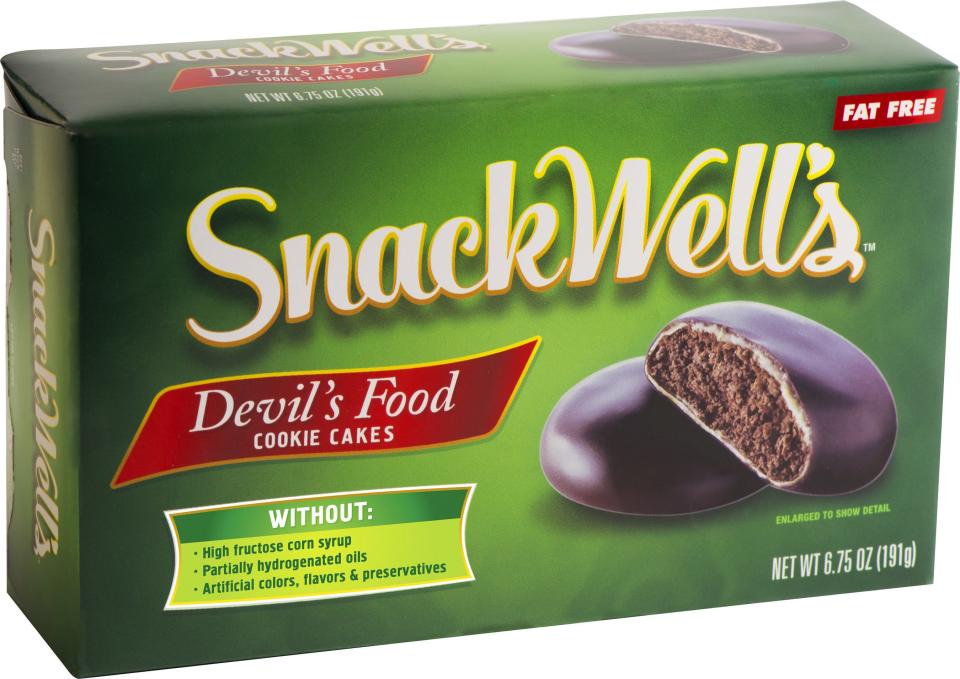
Snackwell's hit supermarket shelves in 1992. The company advertised its cookies as "low-fat" and "better-for-you" at a time when some health experts told consumers that avoiding high-fat foods and staying thin were health ideals, The Takeout reported.
Snackwell's sales ballooned, and by 1995, the cookies brought in $490 million for parent company Nabisco, the New York Times reported at the time. The brand also helped popularize "lite" versions of other snacks, including smaller packages of chips.
But public health experts have since pointed out that low-calorie foods can be a red herring for people trying to eat healthy. "They mistakenly believe that it's okay to devour mass quantities of 'light' chips or cookies, negating the intended calorie savings" compared to eating regular versions of those foods, Consumer Reports said in 2009.
The phenomenon even has a name: the Snackwell's Effect, Consumer Reports said.
In 2022, the brand posted a message to its website saying that the Snackwell's brand "has been retired."
Crystal Pepsi
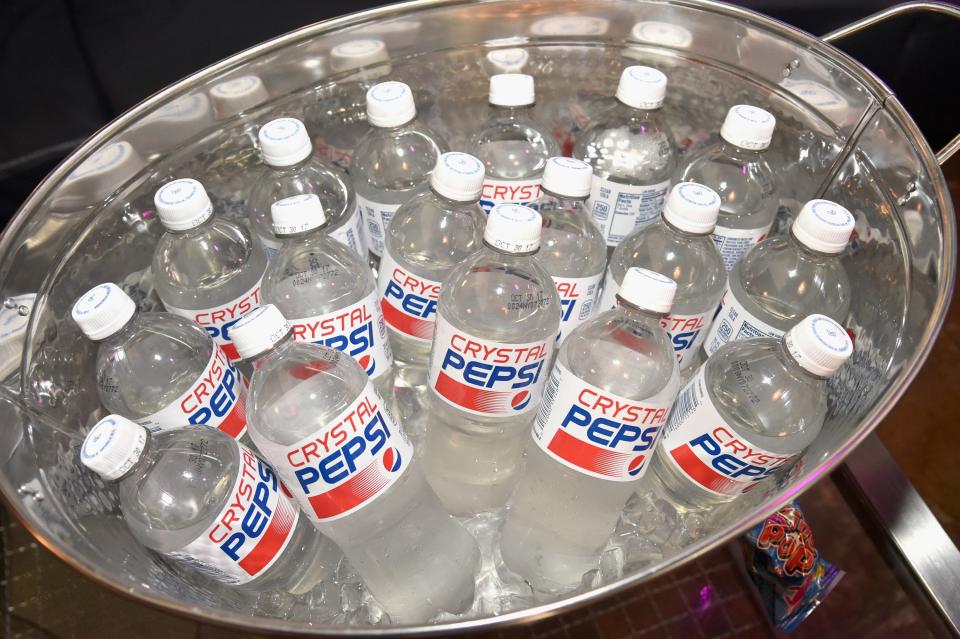
In 1992, Pepsi unveiled what it thought would be a breakthrough idea: What if the company's flagship soda was colorless and caffeine-free?
A Super Bowl ad for Crystal Pepsi the following year played up the new variety. "Right now, someone just got a taste of the future," read one of the ad's frames, which featured a man lounging on a bench with a bottle of the clear soda.
The strategy even solicited a response from rival Coca-Cola, which introduced a clear version of Tab. But drinkers complained that Crystal Pepsi didn't taste like the original, according to former PepsiCo executives interviewed by Thrillist in 2020.
The drink lasted roughly a year before Pepsi pulled it from shelves, sending it the way of other discontinued snacks. The company has brought the product back for a couple of limited runs since then, Insider reported.
New Coke
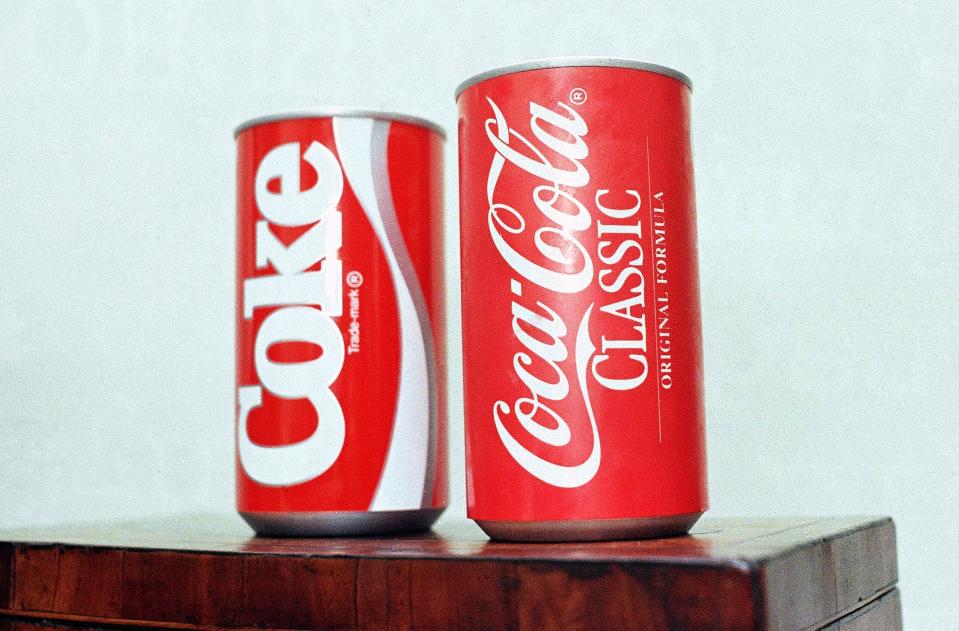
One of the biggest blunders in the history of the food world came in 1985, when Coca-Cola released a reformulated version of its signature drink. So-called "New Coke" was "smoother, rounder, yet bolder," then-CEO Roberto Goizueta told the press at the time, according to the History Channel.
But many drinkers didn't receive the new formula as warmly. Time's food critic at the time said it tasted "a little like classic Coca-Cola that has been diluted by melting ice," while others said it reminded them more of Pepsi. Coca-Cola headquarters in Atlanta was flooded with letters and calls from consumers angry that the company had messed with the best-selling cola in the country, according to the company's version of events.
Coca-Cola briefly tried to sell both New Coke and its original formula side-by-side to appease fans, but by the end of 1985, New Coke was gone.
Frito-Lay Go Snacks
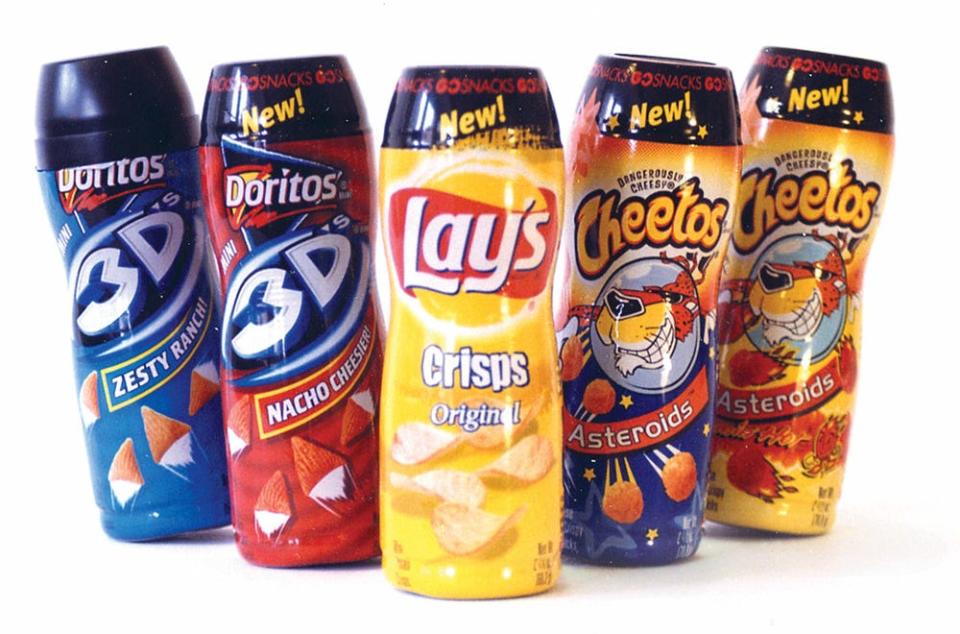
Snack makers experimented with more rigid packaging for their snacks in the early 2000s. One of the most novel ideas was Frito-Lay's Go Snacks, or 8-inch tall plastic tubes that fit in cup holders and weren't as easy to crush in backpacks as bags.
Frito-Lay told customers to "pop the top to open, use top as handy cup for snacking" or stash it on the bottom of the container, trade publication Packaging World reported in 2002.
But the new packaging never caught on, and Frito-Lay discontinued Go Snacks after a couple years, according to Twitter account Discontinued Foods!, which posts photos and details about discontinued snacks.
Smokey Robinson Frozen Dinners
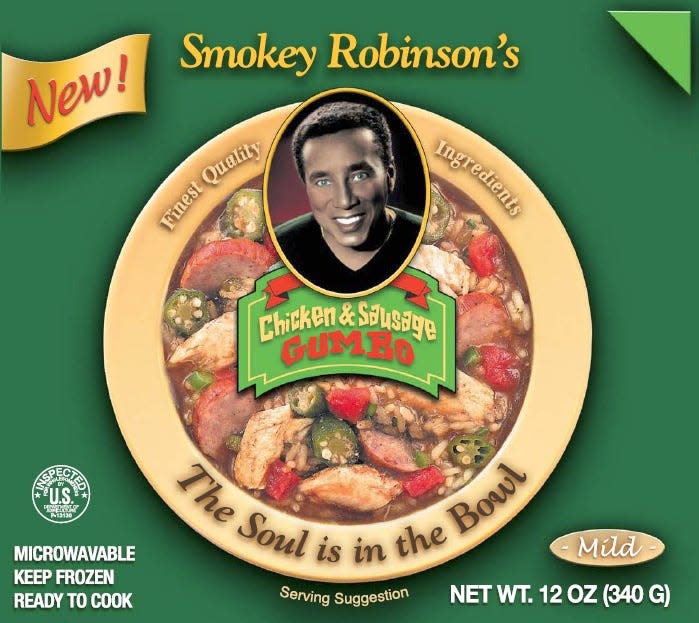
Mowtown legend Smokey Robinson decided to expand his career to a new industry by starting a food company in 2004. The soul of the venture were frozen meals, such as down-home pot roast and chicken and sausage gumbo. The meals were sold at major grocery stores, including Kroger, Safeway, and Albertson's, according to a 2006 press release.
"I've been a gumbo connoisseur since I was a kid," Robinson said while promoting the frozen gumbo in 2005. "If you're going to make real good gumbo, it's an all-day or all-night cook. But this you pop in the microwave and its ready in just seven minutes."
The meals were sold for a few years before being discontinued around 2009, according to the Discontinued Foods! Twitter account.
Yo-J
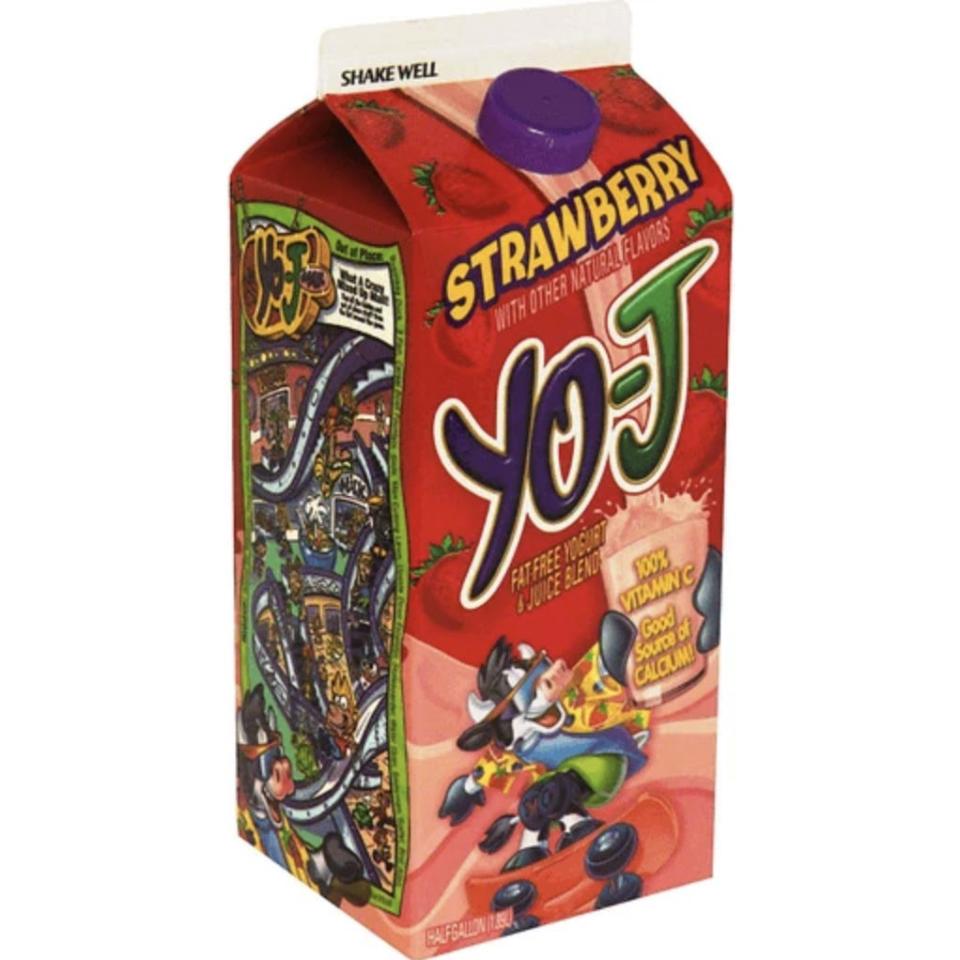
Midwestern kids who grew up in the 90s and early 2000s might remember Yo-J, a mix of drinkable yogurt and fruit juice made by St. Paul, Minnesota-based dairy producer Kemps. The product was advertised with the help of a skateboarding cow who appeared on the carton and in television spots.
Kemps did not immediately respond to Insider's questions about exactly when Yo-J joined the ranks of discontinued snacks or why. But the brand's replies on Twitter to Yo-J devotees make clear that the product isn't on shelves anymore.
—Kemps (@KempsCows) February 14, 2022
That hasn't stopped fans from asking for its return. Yo-J was even the subject of a change.org petition, though the effort fell short of its goal of 1,000 signatures.
Squeezit
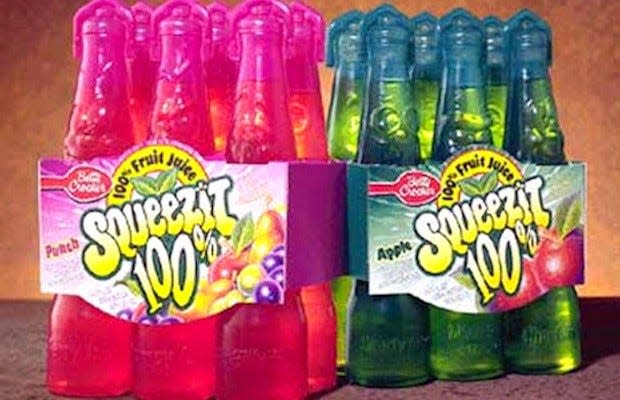
General Mills sold Squeezit drinks from 1985 until 2001. The product would go on to reappear in grocery stores in the early 2000s, according to a YouTube video segment from the company.
The drinks came in several flavors, such as grape and cherry. Crucially, they didn't require a straw, and a revised version of Squeezits were small enough to fit into kids' lunchboxes, the company said.
Read the original article on Business Insider

 Yahoo News
Yahoo News 
